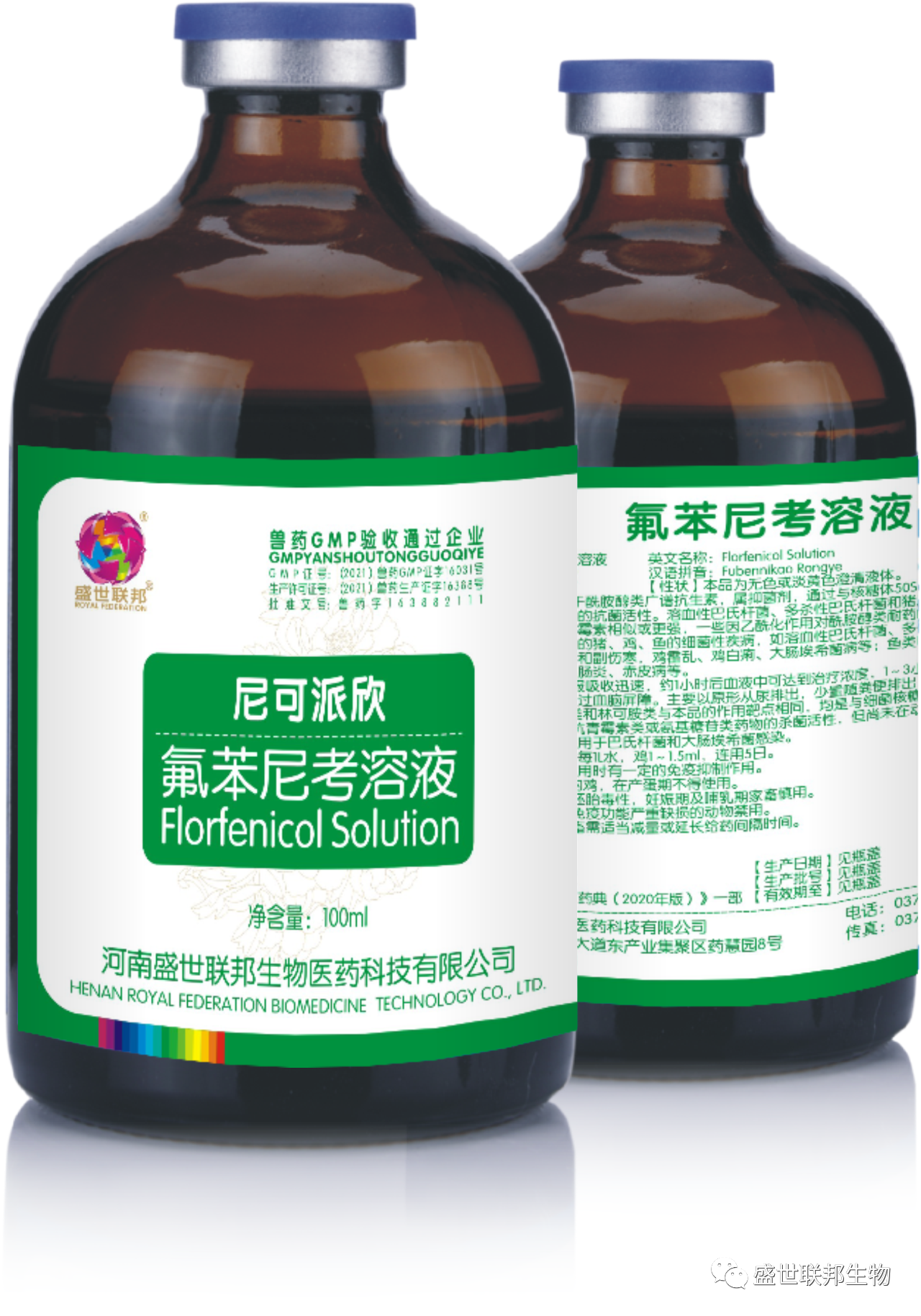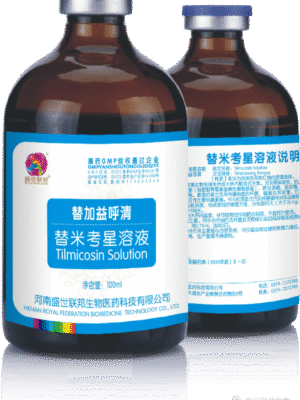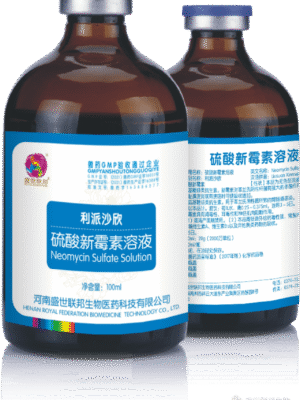For Veterinary Use Only
Main Ingredient:
Florfenicol
Specification:
10% (100 ml/bottle × 60 bottles/carton)
Indications:
Used to treat poultry infections caused by florfenicol-sensitive bacteria, such as avian cholera, pullorum disease, and colibacillosis.
Pharmacological Action:
Pharmacodynamics:
Florfenicol is a broad-spectrum amphenicol antibiotic with potent activity against many Gram-positive, Gram-negative bacteria, and mycoplasma. It inhibits bacterial protein synthesis by binding to the 50S ribosomal subunit.
It remains effective against certain chloramphenicol-resistant strains due to lack of acetylation resistance (e.g., E. coli, Klebsiella pneumoniae). It shows strong efficacy against Pasteurella multocida, Haemophilus parasuis, and Actinobacillus pleuropneumoniae.
Pharmacokinetics:
After oral administration, florfenicol is rapidly absorbed, reaching therapeutic levels in about 1 hour and peak plasma concentration in 1–3 hours.
-
Bioavailability: >80%
-
Distribution: Wide tissue distribution; crosses the blood-brain barrier
-
Excretion: Mainly via urine; partially via feces
Drug Interactions:
-
Macrolides and lincosamides share the same binding site and may antagonize florfenicol.
-
May also interfere with β-lactams and aminoglycosides (not yet confirmed in vivo).
Dosage and Administration:
-
Drinking water: 1.0 – 1.5 ml per 1 L water for poultry
-
Duration: 3–5 consecutive days
Adverse Reactions:
-
May cause immunosuppression at high doses
-
Has embryotoxic effects – avoid during pregnancy and lactation
Precautions:
-
Do not use in laying hens during the laying period
-
Reduce dose or extend dosing interval for animals with renal insufficiency
-
Do not use during vaccination or in animals with severely compromised immune function
Withdrawal Period:
-
Chickens: 5 days




Reviews
There are no reviews yet.